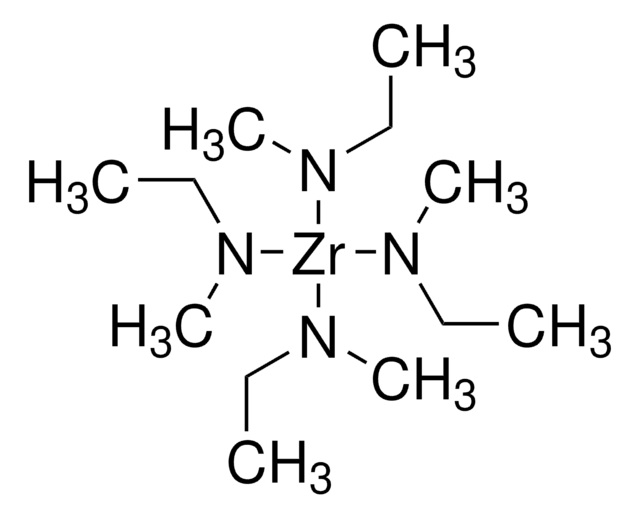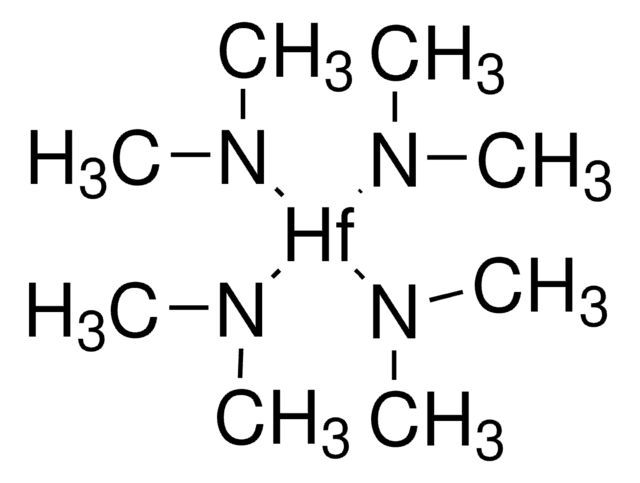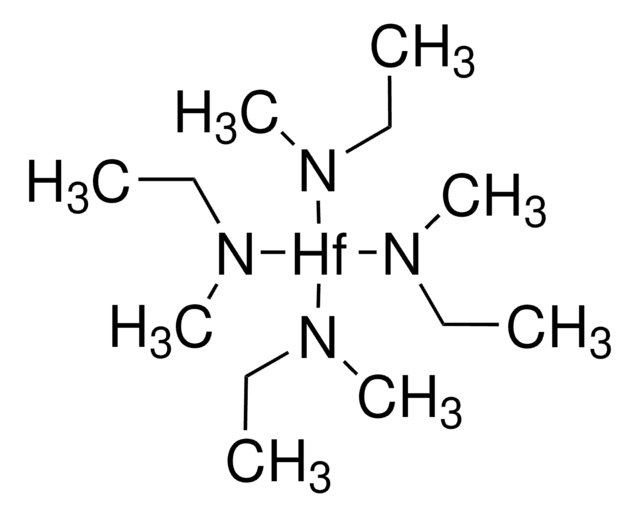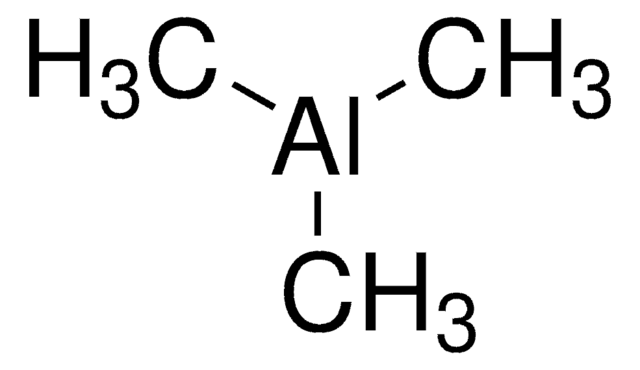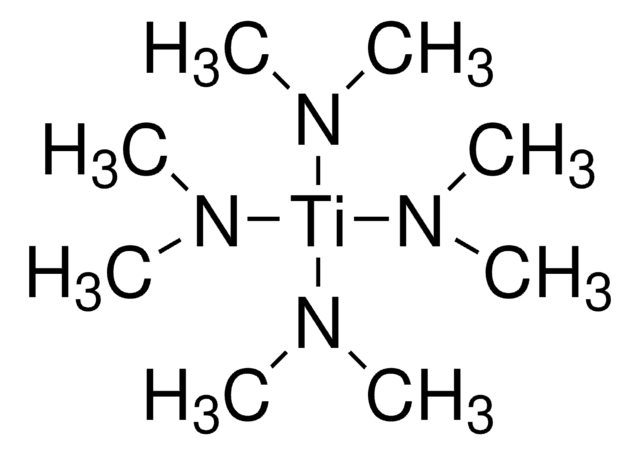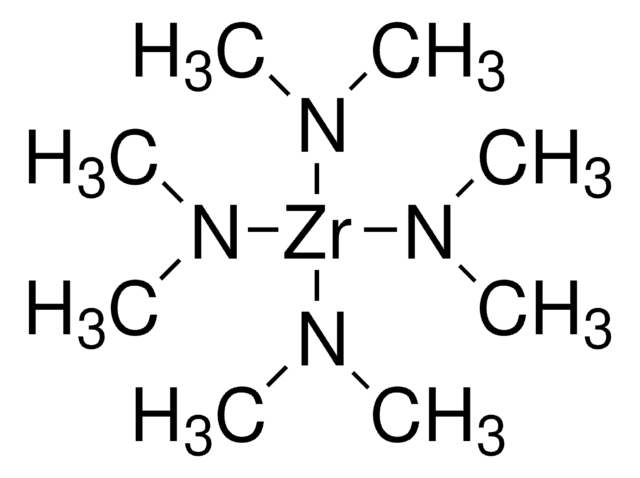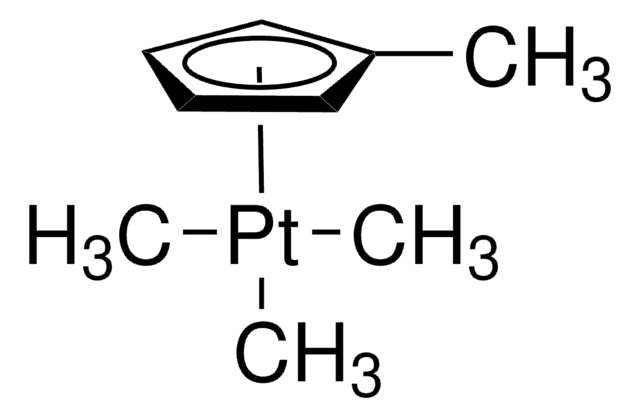725544
Tetrakis(ethylmethylamido)hafnium(IV)
packaged for use in deposition systems
Synonym(s):
TEMAH, Tetrakis(ethylmethylamino)hafnium(IV)
About This Item
Recommended Products
Quality Level
form
liquid
reaction suitability
core: hafnium
reagent type: catalyst
bp
78 °C/0.01 mmHg (lit.)
mp
<-50 °C
density
1.324 g/mL at 25 °C (lit.)
storage temp.
2-8°C
SMILES string
CCN(C)[Hf](N(C)CC)(N(C)CC)N(C)CC
InChI
1S/4C3H8N.Hf/c4*1-3-4-2;/h4*3H2,1-2H3;/q4*-1;+4
InChI key
NPEOKFBCHNGLJD-UHFFFAOYSA-N
Looking for similar products? Visit Product Comparison Guide
General description
Application
TEMAH is well-suited for ALD because its adsorption is self-limiting on a number of substrates including glass, indium-tin oxide(ITO), Si(100), and two-dimensional materials like MoS2. TEMAH also conveniently reacts with either water or ozone as the oxygen-source in the ALD process.
Features and Benefits
- Steel cylinder connected to 316 stainless steelball-valve
- 1/4 inch male Swagelok VCR connections
Signal Word
Danger
Hazard Statements
Precautionary Statements
Hazard Classifications
Acute Tox. 4 Oral - Eye Dam. 1 - Flam. Liq. 2 - Skin Corr. 1B - STOT SE 3 - Water-react 1
Target Organs
Respiratory system
Supplementary Hazards
Storage Class Code
4.3 - Hazardous materials which set free flammable gases upon contact with water
WGK
WGK 3
Flash Point(F)
51.8 °F - closed cup
Flash Point(C)
11 °C - closed cup
Choose from one of the most recent versions:
Already Own This Product?
Find documentation for the products that you have recently purchased in the Document Library.
Customers Also Viewed
Articles
Atomic Layer Deposition (ALD) is a coating technology that allows perfectly conformal deposition onto complex 3D surfaces. The reason for this uniform coating lies in the saturative chemisorption of sequential cycles of precursor vapors.
Nanocomposite Coatings with Tunable Properties Prepared by Atomic Layer Deposition
Thin film photovoltaic devices have become increasingly important in efficiently harnessing solar energy to meet consumer demand.
Our team of scientists has experience in all areas of research including Life Science, Material Science, Chemical Synthesis, Chromatography, Analytical and many others.
Contact Technical Service